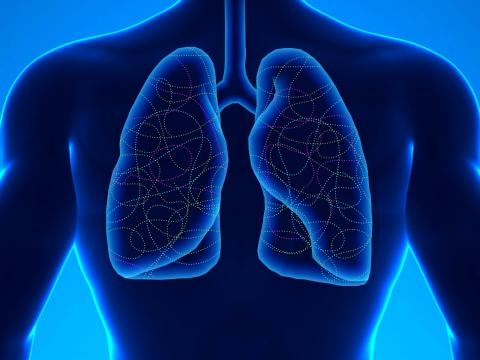Omics-LHV, West Nile Experiment WGCN004 The purpose of this West Nile experiment was to obtain samples for omics analysis in primary mouse granule neuron cells infected with wild type West Nile virus (WNV-NY99 clone 382, WNVWT) and mutant virus (WNVE218A). Overall Design: Granule cell neurons from...
Filter results
Category
- (-) Human Health (112)
- Scientific Discovery (369)
- Biology (258)
- Earth System Science (161)
- Integrative Omics (73)
- Microbiome Science (47)
- National Security (31)
- Computational Research (25)
- Computing & Analytics (17)
- Chemical & Biological Signatures Science (12)
- Energy Resiliency (12)
- Weapons of Mass Effect (12)
- Chemistry (10)
- Data Analytics & Machine Learning (9)
- Computational Mathematics & Statistics (7)
- Materials Science (7)
- Atmospheric Science (6)
- Data Analytics & Machine Learning (6)
- Renewable Energy (6)
- Visual Analytics (6)
- Coastal Science (4)
- Ecosystem Science (4)
- Energy Storage (3)
- Plant Science (3)
- Solar Energy (3)
- Bioenergy Technologies (2)
- Cybersecurity (2)
- Distribution (2)
- Electric Grid Modernization (2)
- Energy Efficiency (2)
- Grid Cybersecurity (2)
- Transportation (2)
- Computational Mathematics & Statistics (1)
- Grid Analytics (1)
- High-Performance Computing (1)
- Subsurface Science (1)
- Terrestrial Aquatics (1)
- Wind Energy (1)
Tags
- Virology (77)
- Immune Response (51)
- Time Sampled Measurement Datasets (51)
- Differential Expression Analysis (46)
- Gene expression profile data (45)
- Homo sapiens (42)
- Mass spectrometry data (31)
- Multi-Omics (30)
- Health (23)
- Virus (23)
- Viruses (23)
- MERS-CoV (19)
- Mus musculus (18)
- West Nile virus (13)
- Influenza A (11)
- Ebola (9)
- Predictive Phenomics (9)
- Lethal Human Viruses (8)
- Microarray (7)
- HCoV-299E (6)
- Human Interferon (6)
- Omics (6)
- Omics-LHV Project (6)
- Resource Metadata (6)
- TA2 (6)
- Type 1 Diabetes (6)
- Autoimmunity (5)
- Machine Learning (5)
- Mass Spectrometry (5)
- Proteomics (5)
Biomedical Resilience & Readiness in Adverse Operating Environments (BRAVE) Project: Exhaled Breath Condensate (EBC) TMT Proteomic Transformation Data Exhaled breath condensate (EBC) represents a low-cost and non-invasive means of examining respiratory health. EBC has been used to discover and...
Last updated on 2024-02-11T22:41:43+00:00 by LN Anderson Influenza A Virus Experiment ICL106 Metadata The purpose of this experiment was to evaluate the human host epigenetic response to Influenza A virus (subtype H5N1) infection. Samples were obtained from human lung adenocarcinoma cell line (Calu...
Category
Last updated on 2024-02-11T22:41:43+00:00 by LN Anderson Influenza A Virus Experiment ICL105 Metadata The purpose of this experiment was to evaluate the host epigenetic response to Influenza A virus (subtype H5N1) infection. Sample data was obtained from human lung adenocarcinoma cells (Calu-3) and...
Category
The OSU/PNNL Superfund Research Program (SRP) represents a longstanding collaboration to quantify Polycyclic Aromatic Hydrocarbons (PAHs) at various superfund sites in the Pacific Northwest and assess their potential impact on human health. To link the chemical measurements to biological activity...
Category
Systems Virology Lethal Human Virus, SARS-CoV Experiment SHAE003 New uploads pending The purpose of this SARS experiment was to obtain samples for transcriptome analysis in Human Airway Epithelial (HAE) cells infected with SARS-CoV, SARS deltaORF6, SARS BatSRBD mutants in a longitudinal study...
Category
Systems Virology Lethal Human Virus, SARS-CoV Experiment SHAE002 New uploads pending The purpose of this SARS experiment was to obtain samples for transcriptome analysis in Human Airway Epithelial (HAE) cells infected with SARS-CoV, SARS deltaORF6, SARS BatSRBD mutants in a longitudinal study...
Category
Systems Virology Lethal Human Virus, SARS-CoV Experiment SCL012 New uploads pending The purpose of this SARS experiment was to obtain samples for metabolome and lipidome analysis comparing wild type virus (icSARS) vs icSARS CoV deltaORF6 infected Human lung tissue 2B4 (Calu-3 clonal derivative)...
Category
Systems Virology Lethal Human Virus, SARS-CoV Experiment SCL009 New uploads pending The purpose of this SARS experiment was to obtain samples for metabolome and lipidome analysis comparing wild type virus (icSARS) infected Human lung tissue 2B4 (Calu-3 clonal derivative) cells to mock infected cells...
Category
Systems Virology Lethal Human Virus, SARS-CoV Experiment SCL008 New uploads pending The purpose of this SARS experiment was to obtain samples for transcriptome and proteome analysis in human lung 2B4 cells (clonal derivative of Calu-3 cells) infected with either icSARS CoV, icSARS-deltaNSP16 or...
Category
Systems Virology Lethal Human Virus, SARS-CoV Experiment SCL006 New uploads pending The purpose of this SARS experiment was to obtain samples for transcriptome and proteome analysis in human lung 2B4 cells (clonal derivative of Calu-3 cells) infected with wild type icSARS CoV Urbani and icSARS Bat...
Category
Systems Virology Lethal Human Virus, SARS-CoV Experiment SCL005 New uploads pending The purpose of this experiment was to evaluate the human host response to wild type virus icSARS-CoV Urbani and mutant virus icSARS deltaORF6 (DORF6) infection for subsequent transcriptional and proteomic analysis in...
Category
Systems Virology Lethal Human Virus, SARS-CoV Experiment SM012 New uploads pending The purpose of this SARS experiment was to obtain samples for transcriptome and proteome analysis in C57Bl/6 mice infected with SARS MA15 or SARS deltaORF6 mutant viruses. Overall Design: Twenty-week-old C57BL/6 mice...
Category
Systems Virology Lethal Human Virus, SARS-CoV Experiment SM003 New uploads pending The purpose of this SARS experiment was to obtain samples for transcriptome and proteome analysis in C57BlL/6 mice lung infected with dicSARS CoV, SARS MA15 wild type and SARS BatSRBD mutant virus. Overall Design...
Category
Omics Lethal Human Virus, SARS-CoV Experiment SM001 New uploads pending The purpose of this experiment was to evaluate the human host response to Severe Acute Respiratory Syndrome coronavirus (SARS-CoV) wild-type virus. Sample data was obtained for 20 week-old C57BL/6J mouse lung tissue infected...



